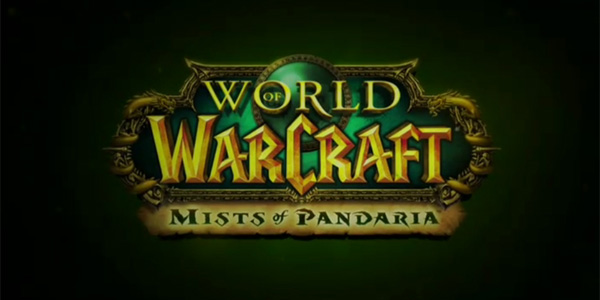It’s hard to believe it’s been over five years since the independent game scene ignited a surprising revolution. Video games have often been a medium which has to looked to the future in order to define itself. While theatre harkens back to Shakespeare, film worships Citizen Kane, and literature is indebted to Dickens, video games – while having its own colorful past – is usually fixated on what comes next. When we talk about the future of video games we often discuss technology, better graphics and more immersion. Talking about virtual reality and the “p”s or “k”s games are running on is all well and good, but video games have already been revolutionized in by their very business model. This revolution wasn’t led by massive teams and multi-billion dollar companies. It was pioneered by the independent scene, and now the big boys of AAA are trying to catch up.
For years video games have been rigidly structured in terms of price and distribution. In fact, going back to the late 80’s and early 90’s, Nintendo ran distribution and pricing with an iron fist, telling companies what price their games would be and how many copies would be distributed. Nintendo’s grip on the industry has loosened over the last couple decades, but companies still were beholden to the pricing and structure of traditional video game business. Games would be printed on a disc/cartridge, it would be shipped to stores, then it would sell between $40 to $60.
Independent game development has existed since the early days of video games, however, without a publisher, these game-makers had no ability to reach an audience. It wasn’t until the internet became charted territory in the video game space that a route around publishers became was truly revealed. The mainstream independent scene arrived when Microsoft announced in 2008 they would be giving independent game development a voice with their Xbox Community Games, later retitled Xbox Live Indie Arcade. Over the last six years we have seen an explosion of the independent scene. Ignoring the traditional business model of more content for more money, the independent scene sought to cut prices significantly and deliver more compact experiences which could be enjoyed in a number days, rather than a number of weeks or months. These games skipped retailers and disc distribution by releasing digitally on Steam, Xbox Arcade, and PlayStation Network.
The independent structure has became a roaring success, every year more small teams and developers are attracted to the independent space, attempting Kickstarters or hoping to pass through Steam Early Access. At this point, so many independent studios are releasing games, inspired by a handful of success stories each year, they almost drown each other out. Each week another studio pitches their small game, asking between $10-$20, trying to be another Braid, Thomas Was Alone, or Gone Home.
Despite this thriving section of the video games industry, AAA development has forged on, almost ignorant of the revolution happening beneath its feet. Studios continued releasing their $60 product, focusing on retailers such as Gamestop and Best Buy to carry their games. There is solid reasoning behind the long hesitation to embrace the digital market by large publishers. First, big publishers are sprawling companies, changing ideology doesn’t happen overnight, decisions are calculated and deliberated before being given a green light. Second, while the rise of digital distribution has been fun to watch, there are large sections of the United States – and the rest of the world – who do not have internet access which would support digital purchasing.
Thus, AAA development and independent development have lived side-by-side, nodding to each other in distant appreciation while never dipping a toe in each other’s waters. Digital purchases have been on the rise, something Sony and Microsoft sought to take advantage of with their new consoles. There have also been cases where Sony and Microsoft have offered to publish independent games on their consoles, helping independent developers like thatgamecompany or Giant Sparrow. Large publishers have also dabbled in free-to-play games, mostly in the mobile space, but none of have released traditional, console-focused titles in the $10-$20 price range, with a digital focus.
Last fall, when Ubisoft announced Child of Light and Valiant Hearts, it was a unique moment for AAA games. Both titles felt like something which would be touted by an independent studio. Smaller teams and asking price, shorter play-times, digital-only releases, it was obvious Ubisoft was basing their strategy for these games off of the independent business model. While at PAX East, I spent time playing both games at the Ubisoft booth. With large explosions, bombastic trailers, and booming audio all-around, Child of Light and Valiant Hearts felt like they belonged next to Hyper Light Drifter and Aztez rather than Wolfenstein: The New Order and Evolve.
Ubisoft’s release strategy is something which has been a long-time coming. Companies either get accused of being repetitive, releasing franchise titles every year which sell based on the title printed on the box-art, or they lose millions of dollars taking a risk on a new property. This new distribution model seems to split the difference, creating minimal financial risk for Ubisoft – not to mention little risk for the customer – and new life for the video game industry. It gives creators like Patrick Plourde a break from Assassin’s Creed and Far Cry, allowing them to make something creatively rewarding and personal, meanwhile protecting Ubisoft from a financial blunder.
From what I’ve played, Child of Light seems to be a fantastic game. It will be interesting to see how many players find themselves trying it out, not only because it looks great but also because of its instant availability at an affordable price. If Child of Light and Valiant Hearts are successful, who knows how many more games Ubisoft will release with this new business model, or how long it will be until other third party publishers like EA, Activision, or 2K are releasing games the same way. Child of Light could end up proving to be a lucrative and safe future for many AAA publishers looking to join the revolution indie games started years ago.






Leave a Reply